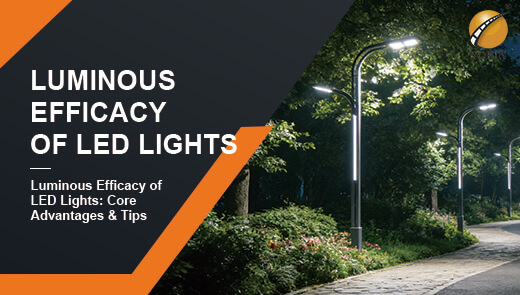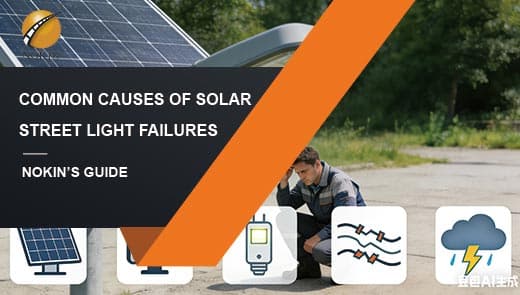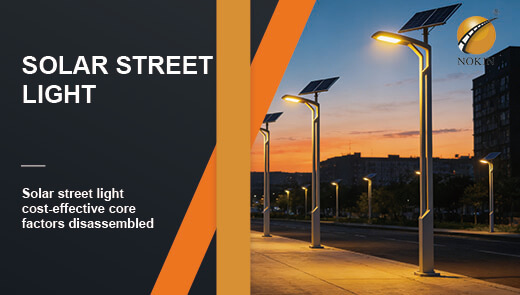Top 100W Solar LED Street Lights Compared for 2025
In the global push toward green energy and smart city development, 100W solar LED street lights have emerged as a popular choice in road lighting due to their high efficiency, energy savings, and low-carbon, eco-friendly characteristics. This article will delve into the 100W solar LED street lights available in the 2025 market from the perspectives of purchasing considerations, brand comparisons, and technological innovations, providing professional guidance for your procurement decisions.
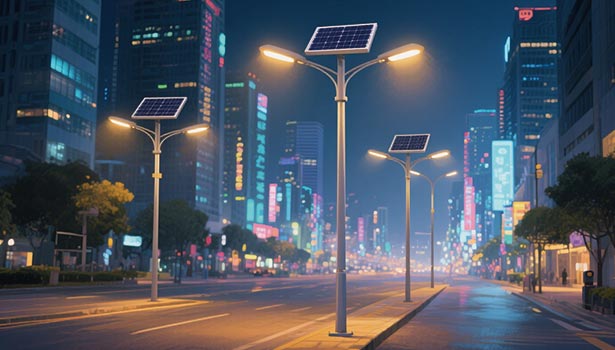
What Factors Should be Considered When Choosing a 100W Solar LED Street Light?
Solar Panel Efficiency and Size
As the “energy heart” of the street light, the efficiency and size of the solar panel directly impact power supply stability. High-efficiency monocrystalline silicon solar panels can achieve conversion rates of over 22%, enabling efficient power generation even in low-light conditions to ensure reliable energy supply for street lights. The size of the solar panel must be determined by calculating factors such as the average daily sunlight hours at the installation site and the average daily power consumption of the street light. The following are reference values for solar panel areas in different scenarios:
|
Usage Scenario |
Average Daily Sunlight Duration |
Solar Panel Area (㎡) |
|
High Sunlight Regions |
6–8 hours |
1.2–1.5 |
|
Moderate Sunlight Regions |
4–6 hours |
1.5–2.0 |
Battery Capacity and Lifespan
Batteries play a crucial role in storing daytime electricity and ensuring nighttime lighting. Taking a 100W street light as an example, lithium batteries with a capacity of 100Ah to 200Ah are commonly used, capable of meeting the nighttime lighting requirements for 10 to 12 hours. Additionally, an advanced Battery Management System (BMS) plays a critical role, enabling intelligent control of charging and discharging, effectively extending battery lifespan to 5–8 years and ensuring the long-term stable operation of street lights.
LED Luminaire Efficiency and Distribution
The luminous efficiency of LED luminaires is measured in “lumens per watt (lm/W),” with high-end products achieving over 160 lm/W. This means they offer higher brightness and greater energy efficiency at the same power level. In terms of optical design, the application of technologies such as batwing-shaped and asymmetric light distribution effectively reduces glare, achieving uniform road illumination and significantly enhancing the safety of pedestrians and vehicles.
Smart Lighting Controls and Monitoring
Modern solar street lights are equipped with intelligent control systems that integrate functions such as light sensing, human presence detection, and remote monitoring. Light sensors enable automatic control to turn off lights at sunrise and turn them on at sunset; human presence detection automatically reduces brightness when no one is present, saving energy; and the remote monitoring system allows real-time viewing of street light operational status, with fault warning response times reduced to minutes, greatly improving maintenance efficiency.
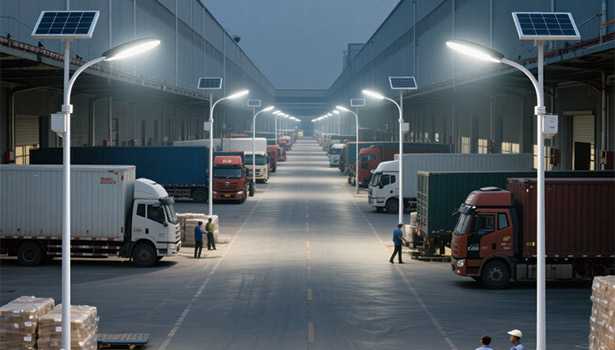
Weatherproof and Robust Enclosure Design
Since street lights are exposed to outdoor environments for extended periods, they must withstand harsh conditions such as wind, rain, extreme heat, and cold. Therefore, protection ratings are critical. An IP65 or higher protection standard effectively prevents dust and water ingress. The aluminum alloy housing combined with heat dissipation fins reduces internal temperatures by 10–15°C, thereby extending the lifespan of core components.
How do Different Brands of 100W Solar LED Street Lights Compare in Terms of Features and Pricing?
Top-Tier Brands and Their Offerings
In the 100W solar LED street light market, top-tier brands such as Philips Lighting (now Signify) and Sunna Design often represent the industry's highest standards of quality and advanced technology. Philips Lighting's 100W solar LED street lights are renowned for their high performance, featuring a remote monitoring system that allows managers to view the real-time operational status of each street light via the internet, including battery levels, brightness adjustments, and fault alerts, significantly improving maintenance efficiency. The adaptive lighting feature automatically adjusts brightness based on environmental light levels and traffic flow, ensuring optimal lighting while maximizing energy savings. The products are meticulously crafted using high-quality materials and advanced manufacturing techniques, offering exceptional durability. Additionally, they come with comprehensive warranty services, providing users with peace of mind. However, these advantages are reflected in the price, with individual units typically costing more.
Sunna Design is another industry leader. The brand's 100W solar LED street lights utilize patented thermal management technology, ensuring stable operation even in extreme high or low temperatures and effectively extending the lifespan of core components. Additionally, the product integrates cutting-edge technologies such as IoT connectivity and smart city integration, enabling seamless integration with urban intelligent management systems for more intelligent lighting management. Due to its advanced technology and outstanding performance, the product is priced at a higher level. While top-tier brands are unmatched in quality and functionality, they may not be the most cost-effective option for projects with limited budgets.
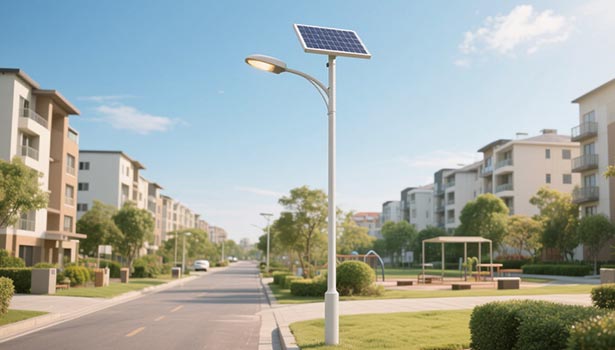
Mid-Range Options
Brands such as Nokin and Greenshine New Energy have launched 100W solar LED street lights that strike a good balance between quality and price, making them a popular choice for many municipal authorities and businesses. These mid-range products are equipped with high-efficiency monocrystalline solar panels, which perform well in terms of light energy conversion efficiency and can meet the daily power requirements of street lights. The use of lithium-ion batteries also ensures stable and long-lasting energy storage.
While the components may not be as high-end as those of top-tier brands, and some “smart” features are simplified—such as the precision of remote monitoring and the sensitivity of adaptive adjustment—these products still excel in basic performance and durability. They meet the needs of most standard lighting scenarios while offering a more budget-friendly price compared to top-tier brands, providing an excellent solution for users seeking value for money.
Budget-Friendly Alternatives
For users with tight budgets or projects with limited funding, brands like Moonlight Technology and Bright Solar offer 100W solar LED street lights that provide economical yet reliable performance. These products typically use lower-cost materials, such as polycrystalline silicon solar panels, which have lower light-to-energy conversion efficiency than monocrystalline silicon panels. However, in areas with ample sunlight, they still meet basic lighting needs. In terms of functionality, they primarily feature basic on/off controls and lack advanced features such as smart dimming or remote monitoring.
However, they do not fall short in basic lighting performance, providing stable lighting services for applications with lower requirements, such as rural roads or small communities. When selecting these cost-effective products, users should carefully evaluate their specifications to ensure they align with project requirements. While they may not match the performance and lifespan of high-end products, proper selection and installation can still achieve satisfactory lighting outcomes, making them a viable option for budget-constrained scenarios.
What are the Latest Technological Advancements in 100W Solar LED Street Lights for 2025?
Smart Lighting Control
By 2025, smart interconnected lighting systems will become the core technological highlight of 100W solar LED street lights. This system integrates meteorological monitoring data, enabling it to quickly increase light intensity during adverse weather conditions such as heavy rain or fog, thereby enhancing road visibility. It also combines traffic flow monitoring data to automatically reduce brightness to energy-saving mode during late-night periods of low traffic volume.
Some advanced systems can also integrate with urban emergency management platforms to quickly adjust lighting schemes during emergencies. Through multi-dimensional data integration and intelligent regulation, overall energy savings increase by over 30%, while significantly improving road safety and lighting management efficiency, achieving a perfect combination of intelligence and energy efficiency.
Wireless Communication
The widespread adoption of low-power wide-area network (LPWAN) technology by 2025 has completely revolutionized street light communication modes. With a coverage radius of 5 kilometers per base station and its low-power characteristics, LPWAN significantly reduces network deployment costs, making it particularly suitable for large-scale street light networking in urban areas.

Supporting thousands of street lights to connect simultaneously, managers can view real-time data on the operational status and power consumption of each street light through a cloud-based platform. Data transmission latency is less than 1 second, ensuring control commands take effect immediately. Additionally, the system automatically collects fault information and sends alerts, enabling maintenance personnel to respond quickly, significantly enhancing the convenience and efficiency of street light management.
Advanced Optics
The optical design innovations of 2025 have brought significant improvements to 100W solar LED street lights. Multi-layer composite optical lens technology uses a precise layered structure to optimize light refraction and reflection paths, significantly increasing light utilization from 75% to 90% and reducing light energy waste. Asymmetric light distribution systems utilize advanced algorithms and optical design to tailor customized lighting solutions for different road sections such as curves, intersections, and sidewalks, precisely controlling the angle and range of light projection. This reduces light pollution while providing pedestrians and vehicles with a more uniform and safer lighting environment, effectively enhancing the nighttime travel experience.
Modularity
The widespread adoption of modular architecture by 2025 fundamentally transforms the maintenance model for 100W solar LED street lights. Core components such as solar panels, batteries, and lighting fixtures feature standardized interface designs, enabling independent plug-and-play replacement. When a component malfunctions, maintenance personnel can complete the replacement within 20 minutes without complex procedures, significantly reducing the previous 2-hour repair time. Additionally, the modular design facilitates product upgrades, allowing users to replace components with higher performance as needed. This architecture reduces the life cycle maintenance costs of street lights by 40%, significantly enhancing the product's economic efficiency and service life.
By 2025, 100W solar LED street lights will undergo a comprehensive upgrade driven by green energy and smart city initiatives. When selecting products, core parameters such as solar panel efficiency, battery capacity, and LED luminous efficacy must precisely match the specific application requirements. Different brands offer diverse options in terms of performance and pricing. From a technological perspective, smart interconnection, wireless communication, optical innovations, and modular design have redefined product logic, transforming street lights from mere lighting tools into intelligent nodes within the urban infrastructure. Looking ahead, as technology continues to evolve, such street lights will deliver higher efficiency, lower costs, and greater adaptability, providing sustained momentum for global low-carbon lighting and smart city development.

